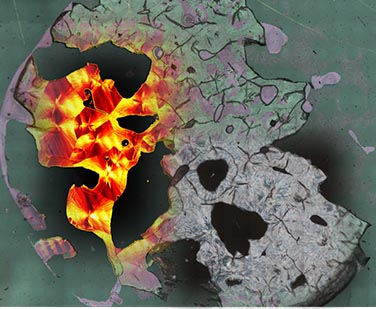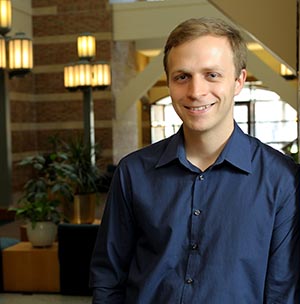Developing faster imaging techniques that can provide information on the chemical and structural properties of non-biological macromolecular materials could provide better imaging of biological materials, particularly histology samples.
A recent study by researchers at the Beckman Institute for Advanced Science and Technology identifies a method of Quantum Cascade Laser-based (QCL) infrared spectroscopic imaging that provides a more rapid method than conventional Fourier transform infrared imaging (FT-IR) to examine spherulites, large semicrystalline polymer samples, in order to identify chemical and structural properties. Their work, “Rapid visualization of macromolecular orientation by discrete frequency mid-infrared spectroscopic imaging,” was published in the journal Analyst.

“We call it smart microscopy because we only spend time measuring frequencies which are important for our given problem. Instead of shining a light from all frequencies, we choose those two to three crucial discrete frequencies.”-Tomasz Wrobel
“What we really wanted to do in this paper is to test how far we can push technology in terms of speed and signal-to-noise ratio (SNR),” said Tomasz Wrobel, a Beckman Institute Postdoctoral Fellow and lead author of the paper. “We chose a simpler system of polymers that are well known, we already know their chemical composition and we know their structure.”
Improving the speed of imaging brings some problems: essentially the faster the imaging, the more noise is present. FT-IR also uses a larger number of frequencies, which can compromise the speed of imaging a small area. By incorporating QCL, the researchers use a laser source that emits one frequency of IR light at a time, moreover a polarized light. To study a system like spherulites, which has orientation dependency, the polarized light provides better structural information.

“We call it smart microscopy because we only spend time measuring frequencies which are important for our given problem,” Wrobel said. “Instead of shining a light from all frequencies, we choose those two to three crucial discrete frequencies.”
In June 2016, the researchers discussed the concepts for the upcoming trend of discrete-frequency infrared and Raman spectroscopic imaging in an issue of Spectroscopy.
“We came up with approximately 180 factor of speed improvement over the technology that does not use the QCL. We achieve this through the new laser source, which is emitting just one frequency of light at a time,” Wrobel said.
FT-IR allows them to acquire all of the frequencies that correspond to chemical properties in order to choose the correct light frequency that can quickly provide the information they need. This approach was used in a prototype instrument developed with Agilent Technologies in collaboration with Rohit Bhargava’s group at the Beckman Institute.
“We can have a beautiful visualization of the structure in a very rapid fashion, comparable or even faster than in the visible range, which is the state of the art,” Wrobel said. “Given that also we achieve chemical composition, not only structure, this is a very nice method of doing that in a fast way on a large scale, both chemically and structurally.”
Wrobel focuses on developing imaging techniques to improve how prostate cancer is diagnosed. Working with Bhargava, a professor of bioengineering and a member of Beckman’s Bioimaging Science and Technology Group, Wrobel hopes to broaden the technique for biological samples in a clinical setting.
”This work allows us to rapidly image molecular orientation in very large areas for the first time thanks to our collaboration with Agilent. It’s a great example of problems across disciplines being connected and cooperation between academia and industry pushing the boundaries of chemical analysis capability,” Bhargava said.
“I am working on speeding up cancer diagnoses, because diagnosis of cancer has been done with FT-IR by Rohit quite a few years ago and now we’re trying to move forward to develop this, to put this in the clinic,” Wrobel said. “A clinical setting requires speed, which we didn’t have previously, so now I’m pushing QCL to diagnose cancer on a clinically relevant scale.”
The research was conducted with support from the Chevron Phillips Chemical Company, LP, and with support from the “Mobility Plus” program from the Polish Ministry of Science and Higher Education.
